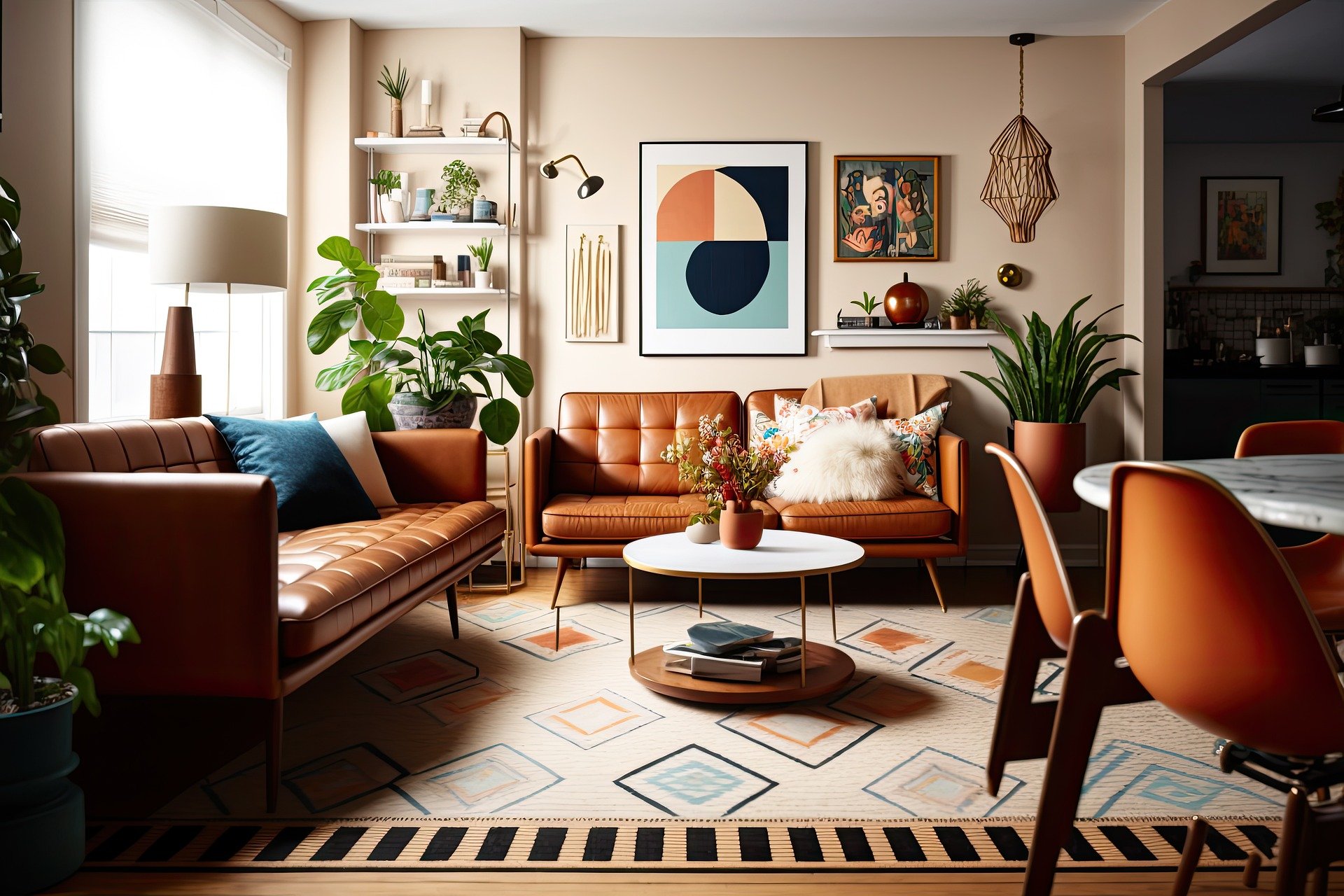Harmonizing Discordant Design: The Art of Eclectic Fusion in Home Decor
In a world where design rules are meant to be broken, a new trend is emerging that challenges conventional wisdom and celebrates individuality. Eclectic fusion, the art of blending seemingly disparate styles, is taking the interior design world by storm. Picture a Victorian-era chaise lounge paired with a sleek, modern coffee table, or a rustic farmhouse kitchen adorned with avant-garde light fixtures. This bold approach to decor is not just about mixing and matching; it's about creating a harmonious symphony from a cacophony of styles.

The Origins of Eclectic Fusion
The roots of eclectic fusion can be traced back to the late 19th century when world travelers began bringing back exotic artifacts from their journeys. These curios were often displayed alongside traditional European furnishings, creating an unintentional blend of styles. As the 20th century progressed, designers began to intentionally mix elements from different periods and cultures, challenging the notion that a room should adhere to a single, cohesive style.
In recent years, the rise of globalization and the accessibility of design inspiration through social media have further fueled the eclectic fusion trend. Homeowners are now exposed to a vast array of styles from around the world, and they’re increasingly confident in combining these elements in their own spaces.
The Psychology of Eclectic Spaces
Eclectic fusion is more than just a visual style; it’s a reflection of the complex, multifaceted nature of modern life. Psychologists have noted that living in an eclectic space can have positive effects on mental well-being. The juxtaposition of different styles stimulates the mind, encouraging creativity and open-mindedness.
Moreover, an eclectic home allows individuals to surround themselves with objects and styles that hold personal meaning, rather than conforming to a predetermined aesthetic. This personalization can lead to a stronger sense of connection to one’s living space and a greater feeling of comfort and belonging.
Mastering the Mix: Key Principles of Eclectic Fusion
While eclectic fusion may appear chaotic at first glance, there are underlying principles that guide successful implementations of this style. The key lies in creating a sense of balance and cohesion amidst the diversity.
Color plays a crucial role in tying disparate elements together. A well-chosen color palette can serve as a unifying thread throughout a space, allowing even the most contrasting pieces to coexist harmoniously. Experts recommend selecting a dominant color and two to three complementary hues to create a cohesive look.
Texture is another important consideration in eclectic design. Mixing different textures adds depth and interest to a space, preventing it from feeling flat or monotonous. Pairing rough, natural materials with smooth, polished surfaces creates a dynamic interplay that engages the senses.
The Role of Focal Points in Eclectic Design
In eclectic fusion, focal points serve as anchors that ground the space and provide visual hierarchy. These can be statement pieces that command attention, such as an oversized art installation or a boldly patterned rug. By strategically placing focal points, designers can guide the eye through the space and create a sense of order within the eclectic mix.
Experts suggest limiting the number of focal points in a room to avoid visual overwhelm. One or two strong focal points per room is typically sufficient to create interest without causing chaos.
Navigating Common Challenges in Eclectic Fusion
While eclectic fusion offers exciting possibilities, it also presents unique challenges. One of the most common pitfalls is creating a space that feels disjointed or cluttered rather than cohesive and intentional. To avoid this, designers recommend establishing a clear vision for the space before beginning the design process.
Another challenge lies in balancing old and new elements. While the juxtaposition of vintage and contemporary pieces can create striking contrasts, it’s important to ensure that neither style overpowers the other. Experts suggest aiming for a 70/30 or 60/40 split between dominant and accent styles to maintain balance.
The Future of Eclectic Fusion
As we move further into the 21st century, the trend towards eclectic fusion shows no signs of slowing down. In fact, designers predict that this approach will continue to evolve, incorporating new technologies and sustainable practices into the mix.
Virtual and augmented reality are poised to revolutionize the way we visualize and experiment with eclectic designs. These technologies will allow homeowners to test different combinations of styles and pieces before making any physical changes to their spaces.
Additionally, the growing emphasis on sustainability is likely to influence eclectic fusion, with a greater focus on upcycled and repurposed items. This shift not only aligns with environmental concerns but also adds unique character to eclectic spaces.
In conclusion, eclectic fusion represents a bold departure from traditional design norms, offering a path to truly personalized and expressive interiors. By embracing the principles of balance, cohesion, and intentionality, homeowners can create spaces that are not only visually striking but also deeply meaningful and comfortable. As we continue to redefine our relationship with our living spaces, eclectic fusion stands as a testament to the power of individual expression in design.





